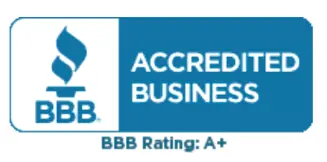-
OLODATEROL (OH loe DA ter ol) treats chronic obstructive pulmonary disease (COPD). It works by opening the airways of the lungs, making it easier to breathe. It is often called a controller inhaler. Do not use it to treat a sudden COPD flare-up.
This medicine may be used for other purposes; ask your health care provider or pharmacist if you have questions.
-
This medication is inhaled through the mouth. Take it as directed on the prescription label at the same time every day. Do not use it more often than directed. Keep taking it unless your care team tells you to stop.
A patient package insert for the product will be given with each prescription and refill. Be sure to read this information carefully each time. The sheet may change often.
This medication comes with INSTRUCTIONS FOR USE. Ask your pharmacist for directions on how to use this medication. Read the information carefully. Talk to your pharmacist or care team if you have questions.
Talk to your care team regarding the use of this medication in children. It is not approved for use in children.
Overdosage: If you think you have taken too much of this medicine contact a poison control center or emergency room at once.
NOTE: This medicine is only for you. Do not share this medicine with others.
-
Do not take this medication with any of the following:
-MAOIs like Carbex, Eldepryl, Marplan, Nardil, and Parnate
This medication may also interact with the following:
-Caffeine
-Diuretics
-Medications for colds or congestion
-Medications for depression, anxiety, or mental health conditions
-Medications for fungal infections like ketoconazole
-Medications for weight loss including some herbal products
-Other medications that prolong the QT interval (cause an abnormal heart rhythm)
-Procarbazine
-Some antibiotics like clarithromycin, erythromycin, levofloxacin, linezolid, and telithromycin
-Some heart medications
-Steroid medications like prednisone or cortisone
-Stimulant medications for attention disorders, weight loss, or to stay awake
-Theophylline
-Thyroid hormones
This list may not describe all possible interactions. Give your health care provider a list of all the medicines, herbs, non-prescription drugs, or dietary supplements you use. Also tell them if you smoke, drink alcohol, or use illegal drugs. Some items may interact with your medicine.
-
Visit your care team for regular checks on your progress. Tell your care team if your symptoms do not start to get better or if they get worse.
If your symptoms get worse or if you need your short-acting inhalers more often, call your care team right away. Do not use this medication more than once every 24 hours.
-
If you miss a dose, take it as soon as you can. If it is almost time for your next dose, take only that dose. Do not take double or extra doses.
-
Side effects that you should report to your care team as soon as possible:
-Allergic reactions—skin rash, itching, hives, swelling of the face, lips, tongue, or throat
-Heart rhythm changes—fast or irregular heartbeat, dizziness, feeling faint or lightheaded, chest pain, trouble breathing
-Increase in blood pressure
-Muscle pain or cramps
-Wheezing or trouble breathing that is worse after use
Side effects that usually do not require medical attention (report to your care team if they continue or are bothersome):
-Headache
-Sore throat
-Tremors or shaking
-Trouble sleeping
This list may not describe all possible side effects. Call your doctor for medical advice about side effects. You may report side effects to FDA at 1-800-FDA-1088.
-
Keep out of the reach of children and pets.
Store at room temperature between 15 and 30 degrees C (59 and 86 degrees F). Keep inhaler away from extreme heat, cold or humidity. Get rid of it 3 months after removing it from the foil pouch, when the dose counter reads "0" or after the expiration date, whichever is first.
To get rid of medications that are no longer needed or have expired:
-Take the medication to a medication take-back program. Check with your pharmacy or law enforcement to find a location.
-If you cannot return the medication, ask your pharmacist or care team how to get rid of this medication safely.
NOTE: This sheet is a summary. It may not cover all possible information. If you have questions about this medicine, talk to your doctor, pharmacist, or health care provider.
DISCLAIMER: This drug information content is provided for informational purposes only and is not intended to be a substitute for professional medical advice, diagnosis, or treatment. Patients should always consult their physician with any questions regarding a medical condition and to obtain medical advice and treatment. Drug information is sourced from GSDD (Gold Standard Drug Database ) provided by Elsevier.
 En Español
En Español

